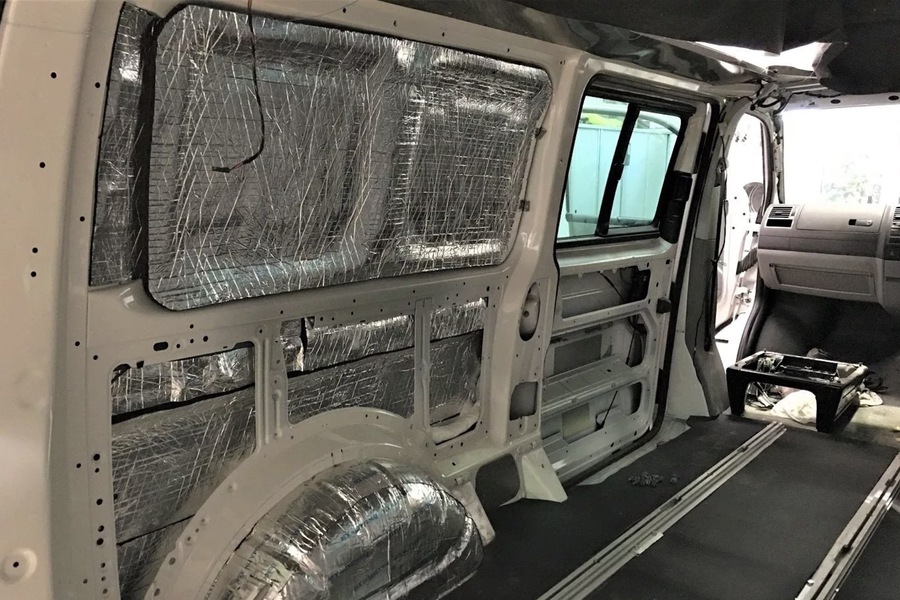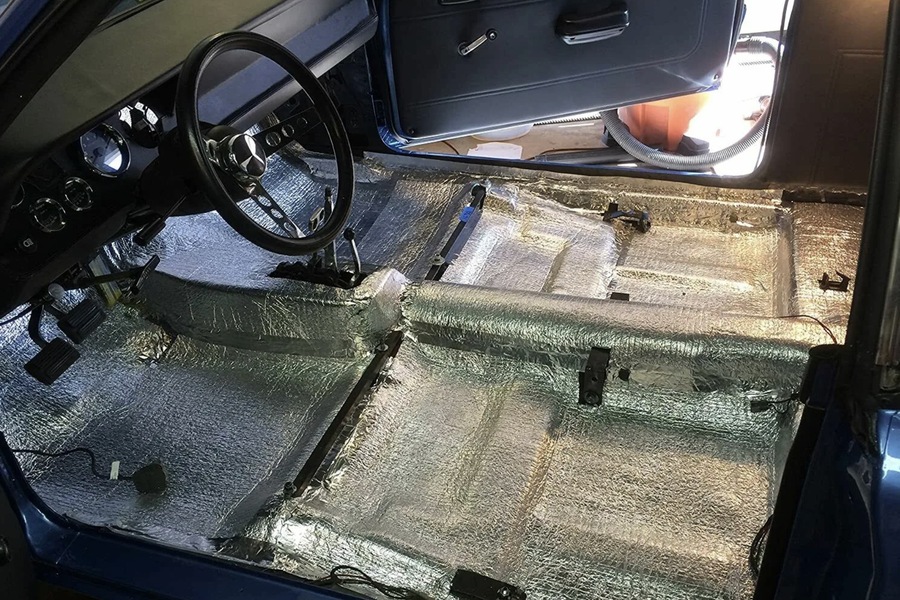Car sound insulation is an essential aspect of automotive design and maintenance, aiming to ensure maximum acoustic comfort in the cabin while protecting passengers from external noise. This process combines vibration-proofing, sound barrier, and other materials to create a quieter, more enjoyable driving experience. Here’s an in-depth look at car sound insulation, its tasks, advantages, and best practices.
General Range of Sound Insulation Tasks
Vibration Isolation
– Materials Used: Thick rubber or a thick layer of mastic.
– Function: Vibration isolation materials prevent sound waves from propagating over metal surfaces, neutralize vibrations, and protect against unpleasant rattling and rustling. These materials act as dampeners, absorbing and dissipating vibrational energy to reduce the noise generated by moving parts and rough road surfaces.
Noise Insulation
– Materials Used: Typically, noise insulation materials are thick, with a porous structure, such as foam, felt, or specialized acoustic mats.
– Function: These materials absorb or reflect acoustic waves propagating in the air. The effectiveness of these materials comes from their ability to trap sound waves within their porous structure, converting sound energy into heat. This process significantly reduces the amount of noise that penetrates the vehicle’s cabin.
Seal
– Materials Used: Felt or foam rubber tapes with an adhesive layer.
– Function: Sealing materials are used locally to eliminate knocks and minor creaks. These tapes are applied to joints, seams, and other potential sources of noise, effectively sealing gaps and preventing air and sound from passing through.

Advantages of Soundproofing a Car
Increased Travel Safety
– Benefit: Sound insulation reduces driver fatigue and irritation caused by constant external noise. A quieter cabin environment allows drivers to concentrate better and respond more effectively to road conditions and hazards, enhancing overall safety.
Providing Comfort
– Benefit: A soundproofed cabin enables calm conversations without raising voices or shouting over engine noise. This enhances the overall travel experience for both the driver and passengers, making long journeys more pleasant.
Unlocking the Potential of Your Speaker System
– Benefit: High-quality sound insulation prevents uncontrolled reflection of sound waves and reduces rattling, allowing for a better audio experience. This is particularly important for car audio enthusiasts who want to enjoy high-fidelity sound from their speakers.
Improving Microclimatic Conditions
– Benefit: Dense, porous sound insulation materials also provide thermal insulation, helping to regulate the cabin temperature. This reduces the need for air conditioning in the summer and heating in the winter, contributing to energy efficiency and passenger comfort.
Additional Body Protection Against Corrosion
– Benefit: Sound insulation materials, when applied in a continuous layer, prevent direct contact between the car’s metal surfaces and water, reducing the risk of corrosion. This protective barrier extends the vehicle’s lifespan by preventing rust and structural damage.
Comprehensive Sound Insulation for Maximum Effect
To achieve the maximum effect in soundproofing, multiple areas within the car need to be addressed. Here’s a list of critical places to focus on:
Doors
– Noise Source: Doors are significant entry points for aerodynamic noise and street sounds. Insulating the doors involves applying soundproofing materials inside the door panels to block external noise.
Wheel Arches
– Noise Source: The rustling of the wheels and stones hitting the fender liners can generate substantial noise. Applying soundproofing materials around the wheel arches helps dampen these sounds.
Interior Floor and Engine Shield
– Noise Source: Vibrations from the chassis and the operation of the power unit are major noise contributors. Soundproofing the floor and engine shield involves using heavy-duty materials that can withstand high temperatures and reduce vibrational noise.
Trunk Walls and Lid
– Noise Source: Noise in the trunk area is particularly noticeable in hatchbacks and crossovers. Insulating the trunk walls and lid helps reduce this noise.
Ceiling
– Noise Source: While the roof is less prone to noise compared to other areas, wind noise and the sound of rain hitting the roof can be distracting. Soundproofing the ceiling can help mitigate these noises.
High-Quality Sound Insulation Materials and Manufacturer
Kicx Expert Plus
– Specialty: This international company offers sound insulation based on bitumen, which is resistant to high humidity. Bitumen sheets are known for their durability and effectiveness in reducing noise and vibrations.
Noico
– Specialty: Noico is a leading manufacturer in the United States, offering innovative insulators designed to protect against vibrations and extraneous sounds. Their products are popular for their ease of installation and high performance.

Cars with Excellent Factory Sound Insulation
Tesla Model S
– Feature: As an electric car, the Tesla Model S lacks the traditional internal combustion engine, which is a major source of noise. The vehicle is designed with superior sound insulation to enhance its already quiet operation.
Nissan Leaf I
– Feature: Another electric vehicle, the Nissan Leaf I, benefits from reduced noise levels due to its electric powertrain. Its design includes soundproofing materials to further enhance cabin quietness.
Mercedes S-Class
– Feature: Known for its luxury and comfort, the Mercedes S-Class features excellent sound insulation. Both newer models (3-5 years old) and older ones (10-12 years old) are praised for their quiet cabins.
Lexus LX
– Feature: This premium SUV offers maximum silence in the cabin, thanks to comprehensive soundproofing measures. It provides a serene driving experience, even in challenging environments.
Audi A3
– Feature: The Audi A3 is frequently used in car audio projects where sound insulation is critical. Its design includes high-quality soundproofing materials to support superior audio performance.
Conclusion
Soundproofing a car is a multi-faceted process that involves using various materials and techniques to reduce vibrations, block external noise, and create a more comfortable and enjoyable driving experience. From improving safety and comfort to enhancing the performance of audio systems and protecting the vehicle from corrosion, comprehensive sound insulation offers numerous benefits. By focusing on key areas such as doors, wheel arches, the interior floor, trunk, and ceiling, and using high-quality materials from reputable manufacturers, drivers can significantly enhance the acoustic comfort of their vehicles.

I am a Junior Web Developer for Oswald Technologies. I am an accomplished coder and programmer, and I enjoy using my skills to contribute to the exciting technological advances that happen every day at Oswald Tech.
